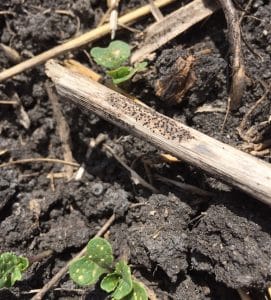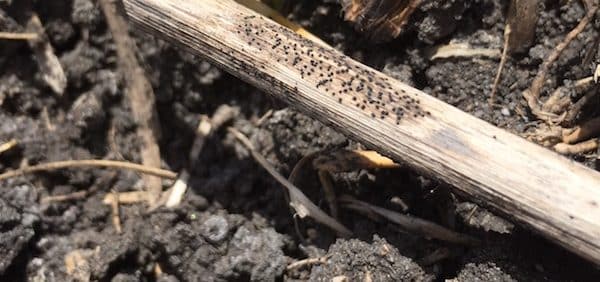Early season moisture paired with warm temperatures in combination with open wounds from flea beetle feeding, for example, can lead to early blackleg infection of canola. If blackleg is to cause yield loss in canola, early infection is required; typically from cotyledon to 6-leaf.

A recent study in Western Canada did not show a strong benefit from fungicide to stop early blackleg. For fungicide to provide an economic level of blackleg suppression, the crop has to be susceptible to the disease, blackleg incidence and severity must be high (usually due to short canola rotations) and the fungicide has to go on early – cotyledon to 4-leaf stage – before visible symptoms appear.
In that situation, application of a strobilurin fungicide can effectively reduce the disease and alleviate canola yield losses. With strong evidence for fungal pathogens to develop insensitivity to strobilurin fungicides, a fungicide treatment should only be recommended in this high-risk situation.
Outside of this specific situation, there is little benefit from a fungicide targeting blackleg. Even on a moderately-resistant cultivar, the fungicide generally does not pay. Instead, continuously scout for blackleg throughout the season to determine severity and yield. This will influence variety and rotation decisions.
If growers do decide to spray a fungicide for blackleg, leave test strips and follow up with a disease survey of treated and untreated strips. Use this protocol for check strips.
Other diseases: While scouting for blackleg, keep a look out for clubroot, seedling diseases and others. No in-crop management options are available for these diseases, but identifying them now can help with planning for next year. Why not just scout at swathing? With severe infection, plants may be gone by harvest. And if growers discover fields newly infested with clubroot, they can leave this field until last in their operations to prevent spread of spore-infested soil. And then sanitize afterwards.
Further reading:
Crop chatter on blackleg
Blackleg.ca
Plant stand evaluation: Early season scouting
